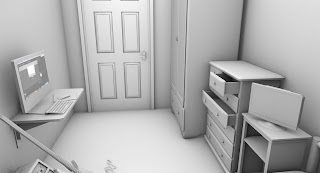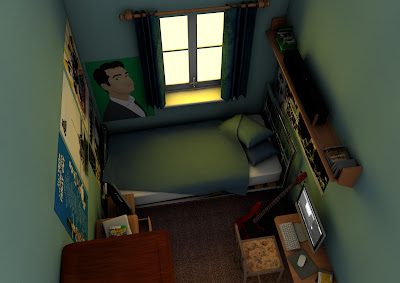 Once the animation has been finished (although this stage may require some lighting to already have been put into place) the lighting can be added to a scene. Naturally, dependant on the type of animation you are trying to produce, different lighting will have to be used. For example a film where the majority of scenes are set under water e.g. Finding Nemo, requires completely different lighting effects to a film set on a distant planet close to a sun. With each scene the lighting will change and complicated lighting rigs can be developed in order to make the characters seem more realistic. As with drawing, it's important to consider the light source frequently in order to understand what is going to be visible and what won't so that animators can understand where to put emphasis and what requires less focus. Lighting can also be used to great effect, it can change the mood and feel of a scene, if two characters are fighting for example then it may be fairly powerful if it's just out in broad daylight, however if they're in the middle of a storm with every strike of lightning lighting their bodies the scene instantly becomes so much more. Whilst 3D lighting can be fairly complex, it can be far harder in 2d animation, to consider every element, the way the light will hit it, the use of reflection etc... There has to be a lot of thought put into ever frame. In turn, Stop motion also throws up a lot of issues when it comes to lighting, for it must remain constant throughout and cannot be knocked or dimmed at any point else the animation will become jumpy. Lighting, whilst not always the longest stage of the pipeline, require large amounts of thought and dedication in order to produce something realistic and noteworthy. Around this text you can see some examples of my own work showing the impact that different light sources would have on it, I decided on the last light source in the bottom image, where the slightly yellowish glow comes softly through the window, I was hoping to replicate the light of the sun, a far softer more natural light than that of a bulb. The middle image shows such a light, and although it was before I had finished texturing my room it is clearly very harsh, the top image is a clay render, the objects are devoid of texture and the light source comes from a render setting called Global Illumination which replicates the glow of the sun and creates a rather soft light.
Once the animation has been finished (although this stage may require some lighting to already have been put into place) the lighting can be added to a scene. Naturally, dependant on the type of animation you are trying to produce, different lighting will have to be used. For example a film where the majority of scenes are set under water e.g. Finding Nemo, requires completely different lighting effects to a film set on a distant planet close to a sun. With each scene the lighting will change and complicated lighting rigs can be developed in order to make the characters seem more realistic. As with drawing, it's important to consider the light source frequently in order to understand what is going to be visible and what won't so that animators can understand where to put emphasis and what requires less focus. Lighting can also be used to great effect, it can change the mood and feel of a scene, if two characters are fighting for example then it may be fairly powerful if it's just out in broad daylight, however if they're in the middle of a storm with every strike of lightning lighting their bodies the scene instantly becomes so much more. Whilst 3D lighting can be fairly complex, it can be far harder in 2d animation, to consider every element, the way the light will hit it, the use of reflection etc... There has to be a lot of thought put into ever frame. In turn, Stop motion also throws up a lot of issues when it comes to lighting, for it must remain constant throughout and cannot be knocked or dimmed at any point else the animation will become jumpy. Lighting, whilst not always the longest stage of the pipeline, require large amounts of thought and dedication in order to produce something realistic and noteworthy. Around this text you can see some examples of my own work showing the impact that different light sources would have on it, I decided on the last light source in the bottom image, where the slightly yellowish glow comes softly through the window, I was hoping to replicate the light of the sun, a far softer more natural light than that of a bulb. The middle image shows such a light, and although it was before I had finished texturing my room it is clearly very harsh, the top image is a clay render, the objects are devoid of texture and the light source comes from a render setting called Global Illumination which replicates the glow of the sun and creates a rather soft light.
To give an idea of how complex a stage lighting can be, the image below shows the credits from Shrek and gives an idea of the number of people it takes to create a truly brilliant animation.



No comments:
Post a Comment